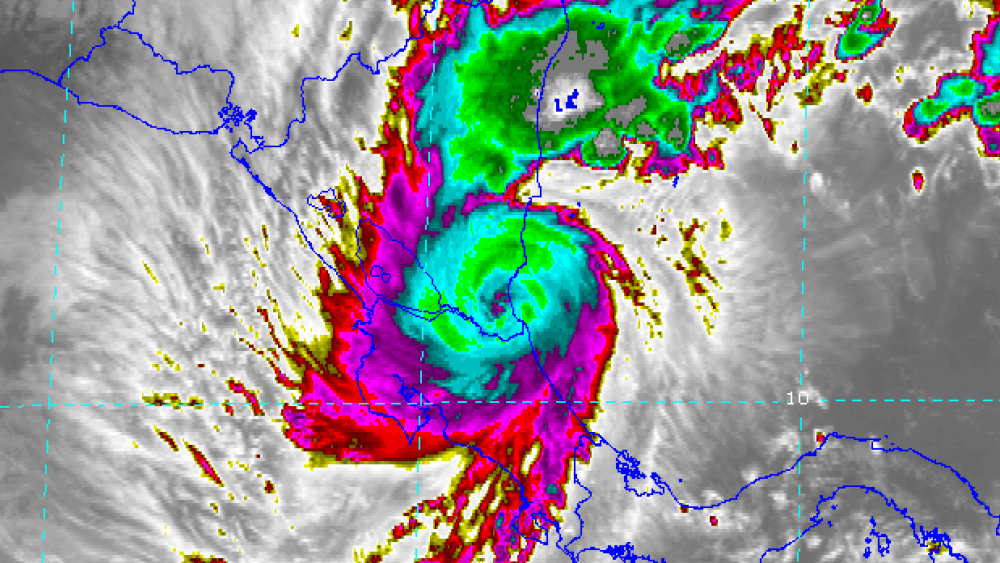
Satellite evolution of Hurricane Otto. Green contours over northeastern Costa Rica Show evidence of convective rainfall as Hurricane Otto approached land. (16.05 UTC, November 24, 2016).
The ENSO phenomenon, also known as "El Niño/Southern Oscillation", regularly leads to natural disasters in the Mesoamerican and Caribbean region - extreme droughts and severe cyclones. Due to one of the most severe ENSO events of the last 150 years, the region experienced a severe drought from 2014 to 2016, with 3.5 million people suffering from food shortages, followed by an above-average cyclone season in 2016 and 2017. These extreme events will continue to increase in the future, with far-reaching consequences for the populations and economies of the affected countries.
"To improve adaptation measures to these extreme hydroclimatic events in the region, we need to find out more about the origin and consequences of tropical cyclones in times of global environmental change," says Prof. Dörthe Tetzlaff, head of the Department of Ecohydrology at IGB. The researcher was part of an international team from Costa Rica, Germany, Scotland, the USA, Cuba, the Bahamas and Japan, which conducted a unique high frequency (hourly resolution) isotope study during three extreme hurricanes in the Caribbean and Atlantic basins: Hurricane Otto (sampled in Costa Rica, 2016) and Hurricanes Irma and María (sampled in Cuba and The Bahamas, 2017).
The research team used stable isotopes as "fingerprints" for the water. The researchers were thus able to quantify where the water for the precipitation during the hurricanes came from and which paths it took. The analyses were carried out in high spatial and temporal resolution so that the origin and effects of the heavy rainfall could be reconstructed realistically. The methods can also be used to compare the frequency and intensity of past storms. For these retrospective analyses, traces of water immortalised in caves, corals and tree rings can be used. "Stable isotopes thus open up excellent possibilities for investigating the distribution of water in the landscape. At IGB we have equipped a state-of-the-art laboratory for the analyses, which enables us to investigate dry events in Brandenburg as well as hurricanes in Central America," says Dörthe Tetzlaff.
Read the study in Nature Communications >
Ricardo Sánchez-Murillo, Ana M. Durán-Quesada, Germain Esquivel-Hernández, Daniela Rojas-Cantillano, Christian Birkel, Kristen Welsh, Minerva Sánchez-Lull, Carlos M. Alonso-Hernández, Doerthe Tetzlaff, Chris Soulsby, Jan Boll, Naoyuki Kurita, Kim M. Cobb. (2019) Deciphering key processes controlling rainfall isotopic variability during extreme tropical cyclones. Nature Communicatios 2019. DOI:10.1038/s41467-019-12062-3





